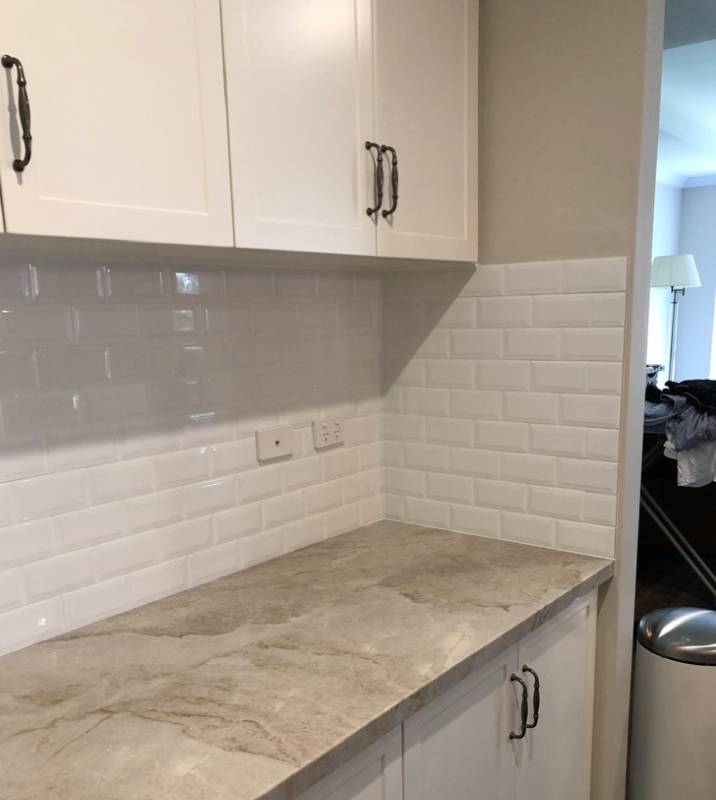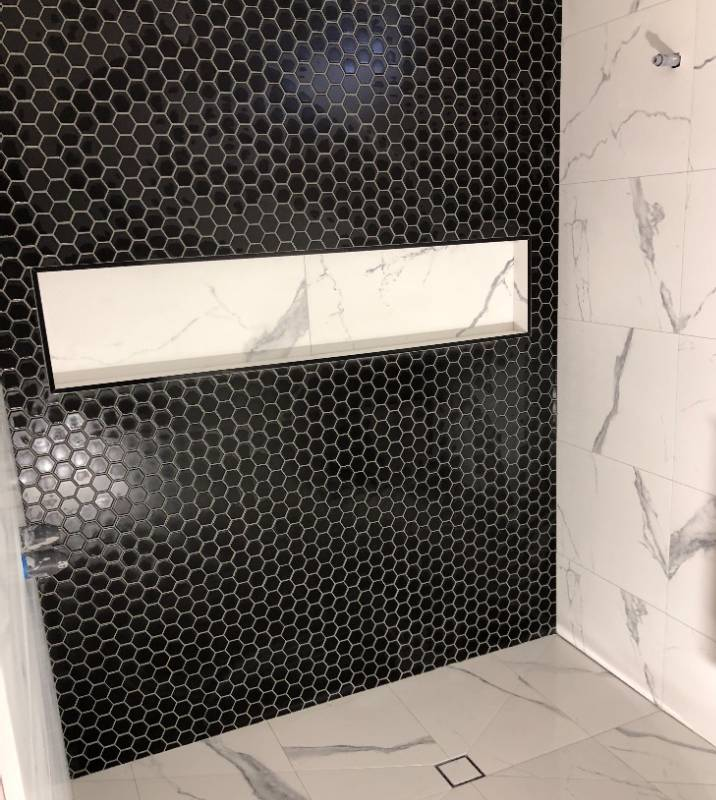
Find a local tiler
- Inspiration /
- Indoor projects /
- Walls & flooring /
- How to tile a wall
How to tile a wall
A step by step guide for this DIY project
Kitchen and bathroom wall tiles are a durable, long-lasting, aesthetically appealing option for DIY projects. Once you learn how to tile and get to know some basic tiling tips and tricks, laying tile can be a fun, inexpensive DIY project that enhances your home’s appearance. Once you learn how to tile a bathroom or kitchen, there are many kitchen and bathroom wall tile ideas you can try that improve the feel, function and value of your home. Tiles come in so many styles and colours, meaning your design options are endless.
How long does it take to tile a room?
Several factors determine how long it takes to tile a room. The room size, type and style of tiles used, and the complexity of the design you want to create all play a role in determining how long tiling a room takes. Additionally, whether you have experience tiling or not will affect the time it will take to complete a project. It will take most people a couple of days to complete a tiling job due to the preparation and drying time required.

Materials and tools
There are several tools you will need when retiling a bathroom or kitchen wall, floor or counter. They include:
- Bucket
- Sponge
- Spirit level
- Tape measure
- Pencil
- Tile levelling support
- Tile cutter – almost every tiling job will require cutting some tiles to size and shape you need.
- Adhesive mixer
- Tile nippers – this is a hand tool used to cut off small pieces of tile so they fit in tight spaces.
- Cross spacers – cross-shaped tile spacers are used to ensure the tiles are placed an equal distance apart. Tile spacers help keep grout line straight and give tile work a professional-looking finish.
- Notched trowel for wall and floor tiles – this lets you control small amounts and thickness of the adhesive attaching the tile to
- the wall or floor will be.
- Small gauging trowel – Use for mixing small amounts of quick-setting drywall compound or mortar.
- Grout float – This is used for spreading and pressing grout between the tiles.
- Angle grinder and a diamond cutting blade – This is used to grind or cut angles into the tile to fit into odd-shaped spaces.
- Drill and diamond-tipped drill bit
- Tile wet saw
How many tiles do I need?
To calculate the number of tiles you for the job, measure the length and width of the area you will be tiling. Multiplying those numbers by each other give you the area’s square meterage. Add 15% to cover cuts, waste and broken tiles. Divide the area’s total square metres by the square metres covered by the tiles in a box of the tiles you choose. This will tell you how many tiles you need.
How to tile a wall
- Prepare the surface: clean the surface thoroughly. Remove any adhesives or coatings and ensure the wall, floor, or countertop is smooth.
- Make measurements and markings: measure the wall to be tiled. Place a tile at the top of the wall and put a mark directly underneath it. Then place another tile below the mark and draw a line on the wall where it ends. Repeat this process until you get to the bottom of the wall. If the space between the last row of tiles and the floor is too small for a full tile, measure the distance. That’s the size to which you will have to cut the last row of tiles.
- Prepare the tile glue: whether you are using a pre-mixed paste adhesive or a cement-based tile adhesive, follow the instructions for preparing it outlined on the package. This ensures the tile will remain firmly affixed to the wall.
- Lay the first row: thoroughly cover the back of a tile with adhesive and push it into the wall’s top left-hand corner. Make sure it is straight and lines up with the mark and the grid pattern you made on the wall.
- Check it is level: using a spirit level is a fast, simple and easy way to ensure each of the tiles you install is straight and level. Simply hold the spirit level up against the bottom of the tile.
- Continue laying rows: once you are sure your first row of tiles is straight and level, put in tile spacers and match each new tile to the one above it. The tile spacers will keep an even space between each row of tiles.
- Cut and lay the corner tiles: Draw the cut lines on top of the tile and then cut off the excess with the tile cutter. Do a dry fit with the tile. Using a notched trowel, thoroughly butter the tile’s bottom with a thin set of the adhesive and press it into place.
Contact local tiling experts
How to grout a tile wall
Put a little water and some grout powder in a clean bucket and mix it until it has toothpaste consistency. Use a grout float to the spread the grout on the tiles in a diagonal motion. Make sure all the joints are filled with grout. When the grout starts to set, use a damp sponge to clean the tiles’ excess grout.
How to tile over electrical outlets
When installing tiles over electrical outlets, turn off the outlet’s power. Outline the electrical outlet’s exact size and shape on the tile with a pencil using a tape measure. Use a clamp to fasten the tile on to a piece of plywood. Using a drill with a diamond-coated bit, drill a hole on each of the 4 corners of the lines drawn on the tile. Using a saw, plunge cut from one hole to the next. Remove the cut section of tile. Use tile nippers to clean off and smoothen all rough areas. Add adhesive to the cut tile, put it in place over the electrical outlet and let it dry.

Can you tile over tile?
You can put new tiles over old ones to save time, money and hassles when retiling. However, don’t do so if the existing tiles are loose, lifting, damaged, or uneven. Even if you have the best tiles for bathroom walls, the new tiles will have all of the same problems. Plus, they may not adhere properly to the old tiles, and the added height can prevent cupboards and doors from opening and closing correctly.
How to hire a tiler
Tiling a wall or an entire room can take some time and requires a lot of attention to ensure it is straight and neat. It might be worth your time to hire a professional tiler to get the job done to make sure the finished product is of high quality.
Licencing and qualifications
When hiring a tiler, make sure to research that they are properly licenced and qualified. It’s also a good idea to ask friends and relatives for some local tilers’ names with whose work they are familiar and impressed.
How much will your job cost?
The Oneflare Cost Guide Centre is your one-stop shop to help you set your budget; from smaller tasks to larger projects.



